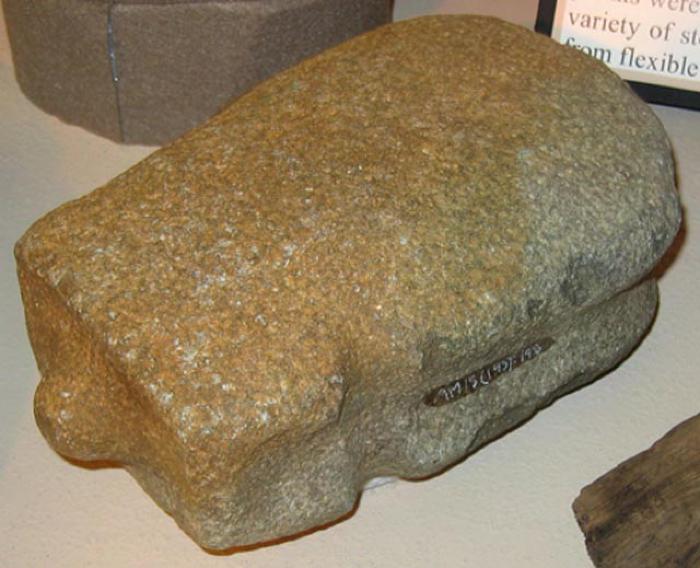Hammer — Mulut’uuk, Murut’uuk

Before the availability of iron tools, Alutiiq people fashioned hammers from hard stones. They collected greywacke and granite cobbles from Kodiak beaches for help with chipping, pounding, and splitting jobs. Small hand-sized stones with pitted sides and ends illustrate the use of hammerstones for delicate jobs like shaping pieces of chert into scrapers and arrow points. Larger cobbles with heavy battering attest to rougher jobs. With these tools, Alutiiq people hammered tent stakes, split bone and wood for carving, and knocked spalls from other cobbles to make sharp-edged butchering and scraping tools.
Although Kodiak’s Native people used hammerstones throughout prehistory, large, carefully made mauls occur mainly in the late prehistoric era. This trend reflects the construction of multiroomed houses, fishing weirs, and large, open skin boats. As Alutiiq people began to build large wooden structures, they developed new tools to help. Fashioned from greywacke cobbles, D-shaped mauls feature large horizontal and vertical grooves, suggesting that they were hafted to make heavy-duty hammers.
